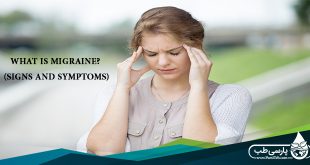treatments of migraine headaches
What is the proper way to use preventive medications?
•Doctors familiar with the treatment of migraine headaches should prescribe preventive medications.
•Decisions about which preventive medication to use are based on the side effects of the medication and the presence of any medical conditions.
•Propranolol (Inderal) often is used first, provided that the individual does not have asthma, COPD, or heart disease. Amitriptyline (Elavil, Endep) also is used commonly.
•Preventive medications are begun at low doses and gradually increased to higher doses if needed. This minimizes side effects from the medications. Preventive medications are to be taken daily for months to years. When they are stopped, the dose needs to be gradually reduced rather than abruptly stopped. Abruptly stopping preventive medications can lead to headaches.
•In some instances, more than one drug may be needed. Non-medication and behavioral therapies also may be needed.
What is the treatment for menstrual migraine?
There are several aspects to treating menstrual migraines:
1.To abort menstrual migraine, take medications after the onset of menstrual migraine. Generally, medications that are effective in aborting non-menstrual migraines are effective at aborting menstrual migraines.
2.To prevent menstrual migraine, take medications just before the onset of menstruation and continue for the duration of the expected headache. Taking hormones such as estrogens or estrogen-related medications also help to prevent migraine.
3.To reduce the frequency and duration of menstrual migraine, take prophylactic medications (such as beta blockers, calcium channel blockers, anticonvulsants, tricyclic antidepressants) that are normally used on a continuous basis to prevent non-menstrual migraines.
NSAIDs such as naproxen sodium (Aleve) or ibuprofen (Advil, Motrin) have been used effectively to abort menstrual migraines. A combination analgesic containing acetaminophen, aspirin, and caffeine (ACC) can also be used to treat menstrual migraines. For women whose menstruation and menstrual migraines occur on a regular and predictable pattern, NSAIDs may be used 24 hours before the expected onset of menstrual migraine and continued for the expected duration of the headache. Since NSAIDs inhibit prostaglandins, they have the added benefit of relieving menstrual cramps as well. For NSAIDs side effects and precautions, please read the “Medication therapies for migraine” section of this article.
Triptans (naratriptan, rizatriptan, sumatriptan, zolmitriptan) have been found to be effective in aborting menstrual migraines, as well as controlling the associated nausea and vomiting. Sumatriptan given two to three days before and continued for the duration of the expected headache was found to be effective in reducing the frequency and severity of menstrual migraine. Naratriptan used in the same manner has also been found to be effective in preventing menstrual migraine. However, in those cases where breakthrough headaches occurred, they were just as severe as in patients taking placebo. For side effects and precautions of triptans, please read the “Triptans” section of this article.
Dihydroergotamine (DHE) can be used as a nasal spray or given intramuscularly or intravenously to abort menstrual migraines. Ergotamine (oral, rectal, or intranasal) and DHE (intranasal, intramuscular, or intravenous) can be used around the time of menstruation (several days before and continued for the duration of the expected headache) to prevent menstrual migraines. For ergot side effects and precautions, please read the “Ergots” section in this article.
If these medications are ineffective, doctors may try daily preventive medications such as beta-blockers, anticonvulsants, calcium channel blockers, and tricyclic antidepressants to reduce the frequency and the severity of menstrual migraines. The choice of the preventive medications is based on the experiences and preferences of the doctor, the medication side effects, and the woman’s other associated medical conditions.
For women already taking preventive medications and yet still experience headaches, the doses of preventive medications can be increased around the time of the menstruation (some doctors use preventive medications only around the time of menstruation). Alternatively doctors may try hormone treatment.
Since a drop in estrogen level just prior to menstruation is the trigger for menstrual migraines, estrogen replacement before menstruation has been used in preventing menstrual migraines. For some women with menstrual migraine, Estradiol skin patches (such as TTS 50, TTS 100) applied 2 days before and continued for 7 days during the expected headache period is effective. However, the dose of estrogen must be closely monitored, as too high of a dose can actually trigger migraine in susceptible individuals.
Some women with difficult to treat menstrual migraines may be helped by using low dose oral contraceptives to reduce the estrogen fluctuations. Other less frequently used medications for menstrual migraines include tamoxifen, bromocriptine, danazol and gonadotropin-releasing hormone (GnRH).
 Parsi Teb Physical and Mental Health Journal
Parsi Teb Physical and Mental Health Journal 



